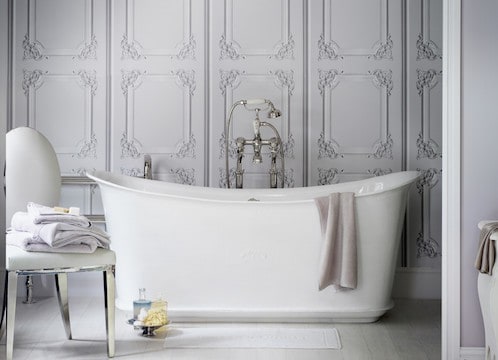Email us at: [email protected] or to speak to a member of the team call us on: 01233 840 840
Introduction:
As spring approaches & the April showers begin to descend, there is nothing more refreshing & revitalising then a warm, water filled bath at the end of the day.
Our emotional responses to water stimulated a sense of tranquility & serenity; whether captured through an ocean horizon or a gushing waterfall, water gives us an overwhelming sense of calm.
In ancient China, philosophers called ‘Taoist’s’ considered water to be a symbolic of great intelligence & wisdom. They believed that bathing in water allowed for a spiritual sense of stillness & rest, which in turn inspired great ideas & innovation. The Buddhist believed that the natural element of water symbolised purity & healing.
Our perception of the tints & shades that water creates has inspired artists & designers throughout the centuries. In the 19th century, during the Impressionist art movement, many artists recognised the emotional power of water in their paintings. Claude Monet was a prominent advocate for this movement & made water the central element of his work. Today, many art historians believe that water inspired some of Monet’s greatest paintings & symbolised the beauty & power of this natural element.
During the Roman Empire, baths for bathing & relaxing were a common feature of many Roman cities. These bath facilities were used to as a place for people to read, relax & socialise. Due to the vast scale of these facilities a new innovation in architecture was born & the first dome like structures in classical architecture evolved.

Are you an Architect, Designer, or in the Trade? Then follow the link to apply for our Trade Account to access exclusive discounts & offers.
Follow the link to view our Showrooms and request an appointment. A member of our team will get in touch to schedule your visit at a date and time that works for you.
To view our product Brochure and Price Guide, please follow the link and complete the form below with your details.
**Your password will be automatically generated and emailed to you. You can change this at any time by visiting your account page.
**Your password will be automatically generated and emailed to you. You can change this at any time by visiting your account page.